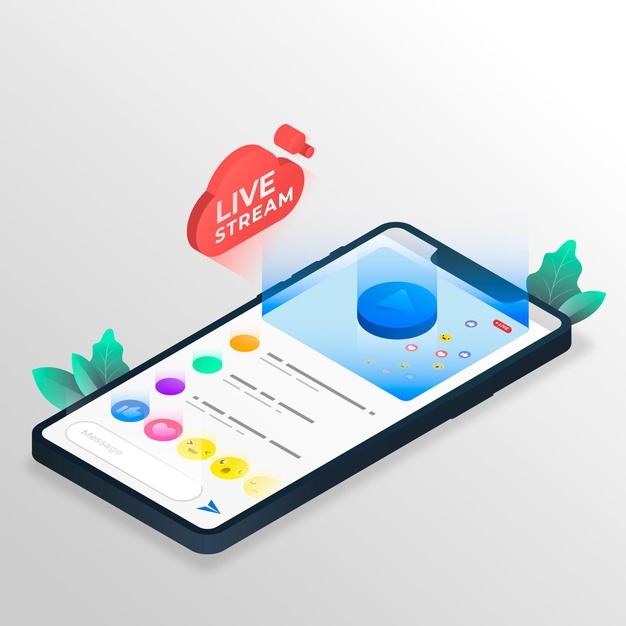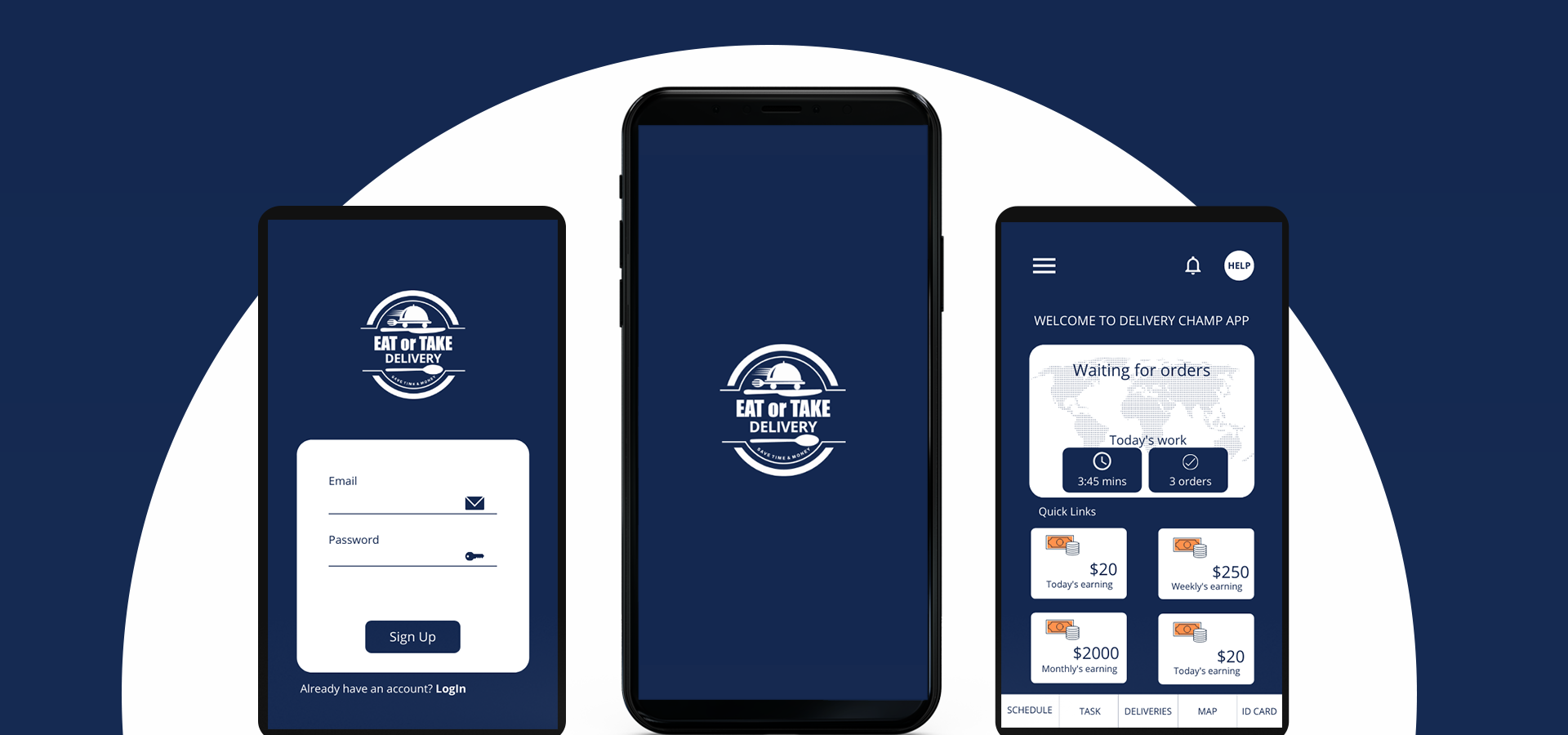Live-streaming applications, as the name indicates, allow users to simultaneously capture and transmit video. Thanks to high-speed internet and improved camera technology, the number of such applications has increased in recent years.
Influencer marketing, entertainment, corporate promotion, and the way people connect on the internet have all benefited from these applications. Here are some of the most popular live streaming apps among users:
- Facebook Live
- Twitch
- Periscope
- Kuaishou
- Douyu
- Bilibili
- 17
Facebook Live is a well-known site for gamers to broadcast their gaming sessions, while Twitch is another well-known platform for players to broadcast their gaming experiences. Douyu, on the other hand, is a Chinese equivalent of Twitch with a larger number of active users.
There Are Three Types Of Live Streaming Apps
You'll need to determine which category your live streaming app belongs to before you start constructing it. The three most frequent forms of live-streaming applications are shown below.
Apps for Live Broadcasting
Live broadcasting is perhaps the most frequent type of live-streaming app. The programme allows users to broadcast live video and audio recordings to anybody with access to the stream. These applications have given rise to a slew of online superstars and influencers.
Twitch, YouTube Live, Livestream, and Periscope are some of the most popular live streaming applications.

Streaming Audio
If you remove the video from the equation, you'll have an audio streaming app. You may listen to audio that is being delivered over the internet in real time using an audio streaming app.
This category includes Pandora, Spotify, and Apple Music.

Streaming Video On Demand
Users can plan and watch their favourite TV episodes online whenever they want using this sort of live streaming software
Hulu, YouTube TV, and Amazon Prime Video are all popular video-on-demand apps.

How Do You Create A Live Streaming MVP?
The process of developing live streaming applications will be the topic of this article. Define your target audience and their requirements
You don't want to build a live streaming service based on guesswork. Instead, you should learn about the genuine requirements and views of the app's users. Plan and conduct user interviews to detect problems early on.
Early input will help you build the live app on the proper track. Furthermore, you may have already secured your first beta testers.
Selecting Monetization Techniques
At some point, you'll want to monetize your live streaming service, and here are three common options
Paid app – consumers must pay a price to download the app. Premium - make the software available for free but with some features reserved for paying customers.
Advertisements – place adverts on the app to earn money through advertising.

For live streaming, hosting, and storage, use a dependable platform.
After that, you'll have to figure out which platform is best for streaming, hosting, and storing the material. Choosing the lowest service is almost never a good idea.
You might be able to get away with compromising quality for money at first, but as the number of users and traffic rises, the poor performance becomes apparent. Laggy streaming and low-resolution films are unacceptable to users, and the app will be abandoned.
Make a fantastic UI/UX design
You'll need to build a beautiful UI/UX for the app in addition to selecting a feasible platform for streaming the material.
Technology is simply one component of a successful live-streaming app. You must distinguish out in a highly competitive sector by providing excellent customer experience. As a result, you'll need to put money into getting the app's UI/UX design perfect.
When compared to a busy interface, a minimalist approach frequently performs better.

Construct and Test Your MVP
You may have a slew of ideas for the app, but the best way to test them out is to create an MVP. An MVP is a stripped-down version of the software that only includes the elements that are absolutely necessary for it to work. It's easy to use and allows you to collect customer feedback quickly.
A Live Streaming App's Tech Stack
You'll still need to select on programming languages, databases, message queues, and other development features, just like with other mobile apps. However, there are three areas that require your attention.
1. The Protocol for Streaming
To broadcast video, there are two main protocols:
Protocol RTMP
WebRTC stands for Web Real-Time Communication Protocol.
RTMP
For high-definition streaming, the RTMP protocol is employed. RTMP is used to transmit live streams at concerts and conferences. The ability to send high-quality audio/video is the biggest benefit of utilising RTMP.
However, this comes at the cost of a lengthier processing time, as the screen capture and the viewer's screen are separated by 10-20 seconds.
WebRTC
WebRTC is a well-known protocol for real-time communication. It's available on video-calling services such as Google Hangouts, Zoom, and BeLive. While WebRTC is faster, it will have no effect on transmission quality if the bandwidth is insufficient.
2.Platform for Streaming
We've already stated how vital it is to choose a platform that is suitable for content streaming. Amazon Web Services (AWS) is an excellent choice in this instance. It gives you the tools you need to manage streams, host the app, and provide content to consumers.

3.Content Distribution Network (CDN)
Choosing the correct CDN guarantees that the live broadcast is available and performing well for the consumers. AWS CloudFront is a streaming platform that powers services like Netflix and AWS MediaLive.
Authentication
By delivering a one-time password and then validating it later, you may effortlessly authenticate the user's account.
Amazon Chime may also be used to create real-time WebRTC video rooms. Agora.io is an excellent choice for interactive real-time broadcasts, especially if AWS is unable to provide the necessary performance.
When it comes to picking a tech stack for live streaming apps, nothing is set in stone. What matters most is that you specify the challenges you want to tackle and change the stack accordingly.

Must-Have Live Streaming MVP Features
You'll need the following features to create an MVP for a live streaming app:
User sign-up/sign-in - A basic registration form that allows users to establish an account and log in to the app using their credentials.
Live streaming - Allows the user to record and broadcast a live feed to subscribers of his or her channel as well as the general public.
Search - Users may search for material by subject, popularity, trending, channel, location, or hobbies using the search box.
User profile - Friends and subscribers can see the user's personal information and profile picture in their user profile.
User gallery - On the user's profile, save and arrange recorded videos.
Commenting/Rating system - Live streaming applications rely on social participation, which is why they have a commenting/rating system. As a result, it's critical to incorporate a commenting/rating system so that viewers may provide input on the video.
Features for a Live Streaming App That Would Be Nice to Have
You might consider adding these features to improve user experience if you have an MVP that has been accepted by users.
Social sign up - Users may join up using their social network accounts with a single click, avoiding the time-consuming process of filling out forms.
Extended user profile - Add sophisticated features like interest, preferences, location, and personalizations to your user profile to go beyond the standard name and profile image.
Extended streaming features - Consider including tools such as filters or screen sharing, which open up new ways to use the software.
Chats - Including a chat feature allows the broadcaster to interact with the audience in real time.

Enhanced search features - Increase the number of search parameters accessible. Users may, for example, search for films within a certain radius of their current location.
Feed - Create a more interactive feed that allows consumers to customise the sorts of material they receive.
Subscriptions - Introduce several types of subscriptions and make it easy for consumers to manage them from the app.
Recommendations - Based on the consumers' choices and viewing history, provide them similar material.
Notifications - Allow the app to provide push alerts to the user when there is intriguing material being broadcast.
What Does It Cost To Create A Live Streaming MVP?
There is no set fee, and you cannot create a live streaming app for free. The cost of developing a live streaming app or MVP is determined by the scale of the project, the number of hours required, and the design complexity.
Here's a table with a development cost estimate for one platform based on an hourly rate of $50, as well as extra services such as design, QA, project management, and others that may be requested.

Our method of working
Aahantechnologies develops live streaming apps, and we currently have a number of them that we can customise to the customer's preferences. Our developers can also create live streaming applications. We've worked on a number of projects involving live streaming, and we've developed a high-quality live streaming application that works for a larger audience, as well as a user-friendly and convenient application. To create live streaming apps, we utilise Agora, MUX Vimeo, and Java, Swift, Native, Node Js, or PHP.
Our developer team will stay in touch with you at all times to ensure that your needs are met.
Interactive Game Show in Real Time
As part of an interactive entertainment network, our team has also built a multi-faceted software that blends mobile games, live video, and TV-style game shows. On both Android and iOS smartphones, the app allows users to view original episodes and enter to win cash rewards
Summary
You should now be able to tell which platform is suitable for streaming content and how to create a live streaming app. In our market, there is a delicate balance between corporate aims and consumer experience.
Often, you'll need the assistance of an experienced streaming app developer. Contact our team to learn more about making a live streaming MVP.







